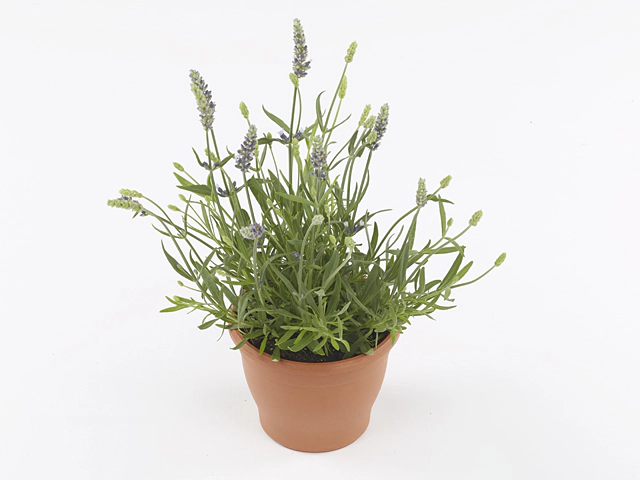Lavandula angustifolia Not Normal

| Leaf arrangement | crosswise opposite |
| Flower scent | Sweet scented |
| Winter hardness | Limited (USDA-zone 8) |
| Flower color | Blue-dark violet blue-N089B |
| Leaf, general shape | Linear |
| Leaf, scent | Pleasantly scented |
| Flower diameter | Small; 1 - 10 mm |
| Plant height | 20 - 30 cm |
| Inflorescence | Spike |
| Flowering month(s) | May; June; July; August; September |
| Leaf duration | Deciduous |
| Leaf size | 3 - 4 cm |
| Inflorescence length | <5 cm |
| Inflorescence diameter | < 1 cm |
| Leaf, main color | Grey green |
| Flower color distribution | Unicolored |
Lavender, scientifically known as Lavandula angustifolia, is a fascinating plant with its unique characteristics and striking appearance. With its crosswise opposite leaf arrangement, this perennial herb stands out among other plants. But what truly sets it apart is its extraordinary scent and vibrant flowers.
The scent of Lavandula angustifolia is sweet and pleasant, making it a popular choice for aromatherapy and soothing fragrances. Its fragrance has a calming effect on the senses, promoting relaxation and reducing stress. Many people adore the soothing scent of lavender and use it in various ways, such as in essential oils, bath products, and even culinary creations.
Lavender is known for its limited winter hardness, making it suitable for USDA-zone 8 or milder climates. In regions with colder temperatures, it may require some extra care and protection during the winter months to ensure its survival. However, in the right conditions, lavender can flourish and bring beauty to any garden or landscape.
When it comes to the appearance of Lavandula angustifolia, its flowers steal the show. The flower color is a captivating shade of blue-dark violet blue, specifically classified as N089B. These striking flowers, with their small diameter ranging from 1 to 10 mm, create a delightful visual display.
The plant itself has a moderate height, typically reaching between 20 to 30 cm. The inflorescence of lavender is in the form of a spike, adding a touch of elegance to its overall appearance. Lavender is known to bloom for several months, from May to September, gracing gardens with its lovely presence throughout the summer season.
Although the flowers of Lavandula angustifolia are a highlight, its leaves also deserve admiration. The leaves are linear in shape and have a grey-green color, providing a subtle contrast to the vibrant flowers. Additionally, the leaves emit a pleasant scent that complements the overall aromatic experience of the plant.
The size of the leaves is relatively small, measuring approximately 3 to 4 cm in length. Furthermore, the inflorescence length and diameter are both relatively modest, with a length of less than 5 cm and a diameter of less than 1 cm.
Lavandula angustifolia is a deciduous plant, meaning its leaves fall off during certain periods. This characteristic adds another dimension to its appearance, as it goes through seasonal changes and showcases different aspects of its natural beauty.
In summary, Lavandula angustifolia, or lavender, is an extraordinary plant with its sweet-scented flowers and crosswise opposite leaf arrangement. Despite its limited winter hardness, it thrives in suitable climates and captivates with its blue-dark violet blue blooms. Its linear leaves, pleasantly scented and grey-green in color, add an extra touch of elegance. Lavender is a versatile and beloved herb that enhances gardens, landscapes, and our well-being with its remarkable attributes.
Market availability index by month:
| Jan. | Feb. | Mar. | Apr. | May | Jun. | Jul. | Aug. | Sep. | Oct. | Nov. | Dec. |
|---|---|---|---|---|---|---|---|---|---|---|---|
| 1 | 1 | 3 | 4 | 4 | 3 | 3 | 2 | 1 | 1 | 1 | 1 |